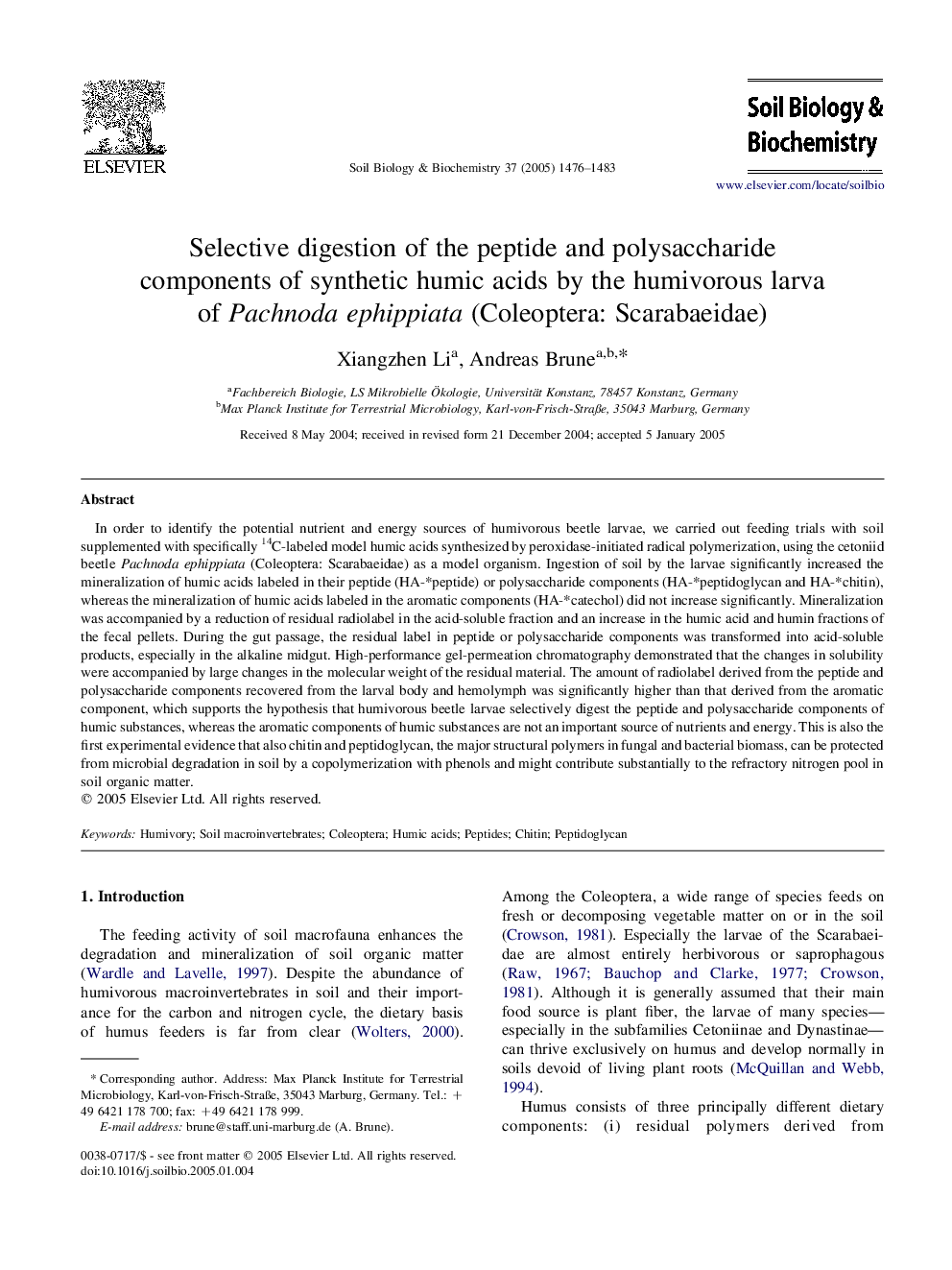| Article ID | Journal | Published Year | Pages | File Type |
|---|---|---|---|---|
| 10846228 | Soil Biology and Biochemistry | 2005 | 8 Pages |
Abstract
In order to identify the potential nutrient and energy sources of humivorous beetle larvae, we carried out feeding trials with soil supplemented with specifically 14C-labeled model humic acids synthesized by peroxidase-initiated radical polymerization, using the cetoniid beetle Pachnoda ephippiata (Coleoptera: Scarabaeidae) as a model organism. Ingestion of soil by the larvae significantly increased the mineralization of humic acids labeled in their peptide (HA-*peptide) or polysaccharide components (HA-*peptidoglycan and HA-*chitin), whereas the mineralization of humic acids labeled in the aromatic components (HA-*catechol) did not increase significantly. Mineralization was accompanied by a reduction of residual radiolabel in the acid-soluble fraction and an increase in the humic acid and humin fractions of the fecal pellets. During the gut passage, the residual label in peptide or polysaccharide components was transformed into acid-soluble products, especially in the alkaline midgut. High-performance gel-permeation chromatography demonstrated that the changes in solubility were accompanied by large changes in the molecular weight of the residual material. The amount of radiolabel derived from the peptide and polysaccharide components recovered from the larval body and hemolymph was significantly higher than that derived from the aromatic component, which supports the hypothesis that humivorous beetle larvae selectively digest the peptide and polysaccharide components of humic substances, whereas the aromatic components of humic substances are not an important source of nutrients and energy. This is also the first experimental evidence that also chitin and peptidoglycan, the major structural polymers in fungal and bacterial biomass, can be protected from microbial degradation in soil by a copolymerization with phenols and might contribute substantially to the refractory nitrogen pool in soil organic matter.
Related Topics
Life Sciences
Agricultural and Biological Sciences
Soil Science
Authors
Xiangzhen Li, Andreas Brune,
